The Most Unusual Creatures In The Deep Blue Sea
The ocean has some of the most diverse species of sea life and there are still many creatures that haven't been discovered. There are also tons of freaky-looking ocean animals that are lurking deep down in the sea. It's not every day that people are running into these creatures, but when divers are able to capture photos of them, the result is incredible.
Animals such as the giant squid, giant snakehead, and the Black Swallower are a bit frightening to gaze upon. These are some of the most unusual creatures that lurk in the ocean.
Keep Away from the Frilled Shark
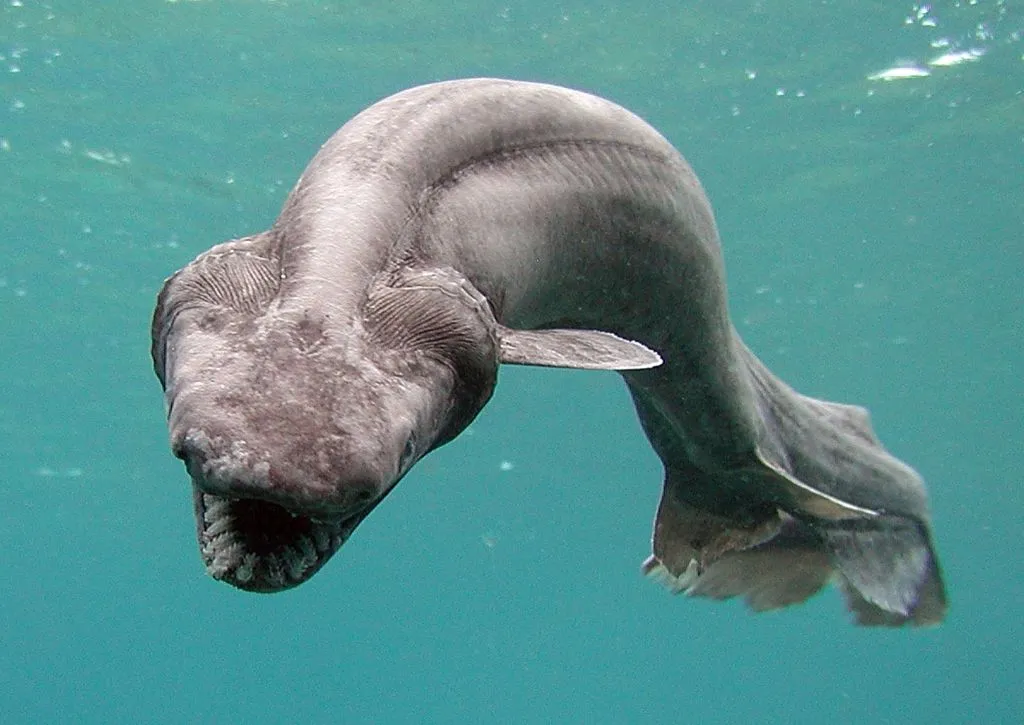
This isn't a fictional character out of Stranger Things, but a real shark that swims in the Atlantic and Pacific Oceans. It has the nickname of "a living fossil" because it has a prehistoric appearance. The reason that it's called a frilled shark is because of its six pairs of gill slits along the body.
Something quite terrifying is that they will quickly lunge at their prey, often swallowing them whole. They're rarely seen in the ocean and are also one of the few non-mammals to be born from yolk sacs.
Swimming with the Dumbo Octopus
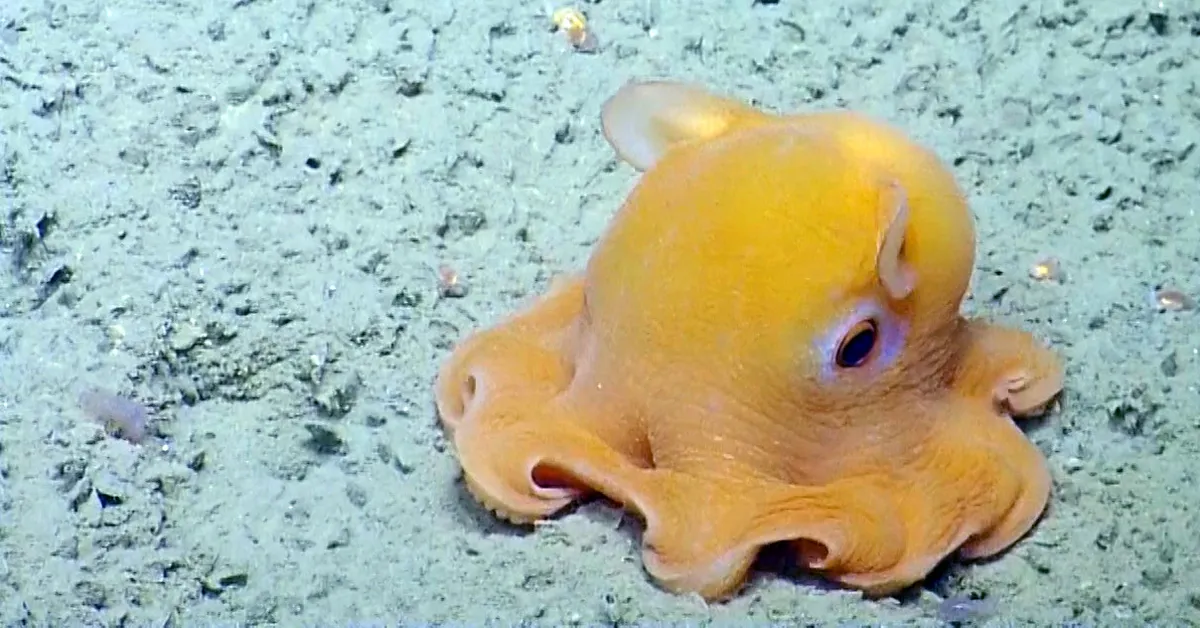
Deep down in the ocean live some of the weirdest creatures called Dumbo octopuses. They swim at a depth of at least 13,100 feet, which makes them the deepest living octopuses on earth. A unique trait of theirs is that they can successfully reproduce with a mate at any time.
Just by looking at the picture it's easy to tell that they move in a weird motion because they slowly flap their fins and use their arms to steer. Luckily, they are almost never captured and aren't threatened by humans.
Beware of the Blobfish
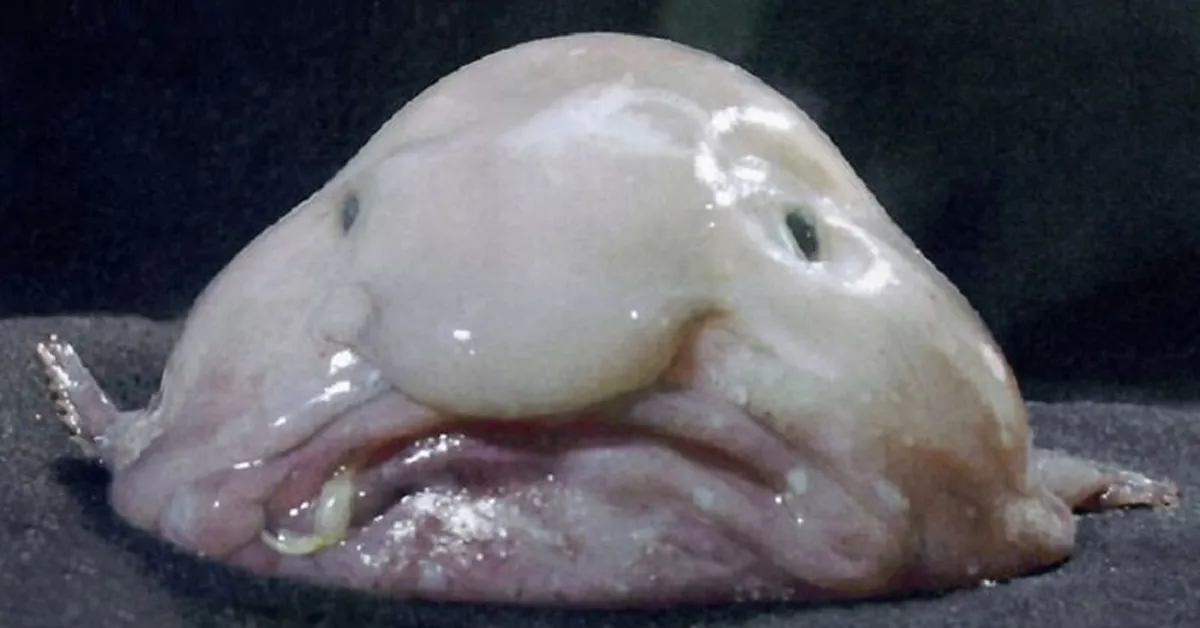
Not only is the blobfish something of nightmares, but it was also voted the world's most hideous species by the Ugly Animal Preservation Society. This bottom dweller's native home is in the South Pacific and it's made out of a gelatinous material that allows it to float in the water.
The blobfish lives at a depth of 2,000 to 4,000 feet, which equates to one ton of underwater pressure. This is why when a blobfish is taken out of the water like in the picture it starts to get bloated and puff up.
Why Goblin Sharks Have Long Snouts
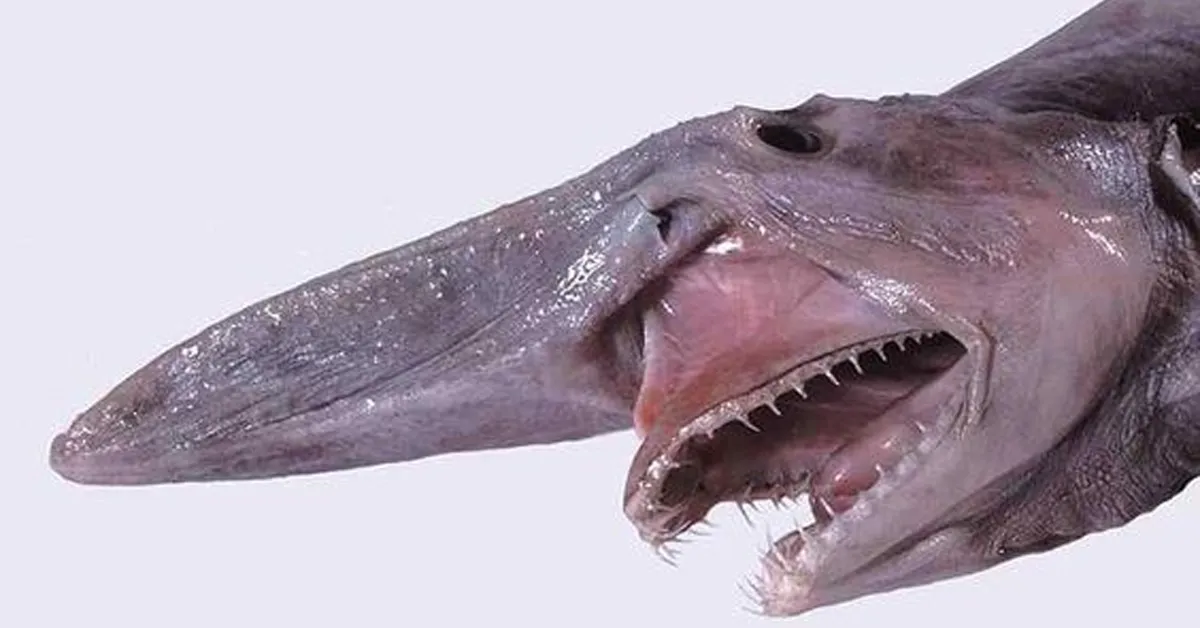
Goblin sharks live toward the bottom of the ocean along the continental shelves around Japan. They can grow up to 12 feet long and weigh 460 pounds. Their signature look includes a long, narrow snout and sharp, fang-like teeth. They're named after the mythical goblins in old Japanese folktales.
Their snout is covered in special sensing organs that help them sense electric fields in the dark depths of the water. At one point they weren't even considered to be sharks because their snout made them stand out.
Don't Go Near the Giant Snakehead
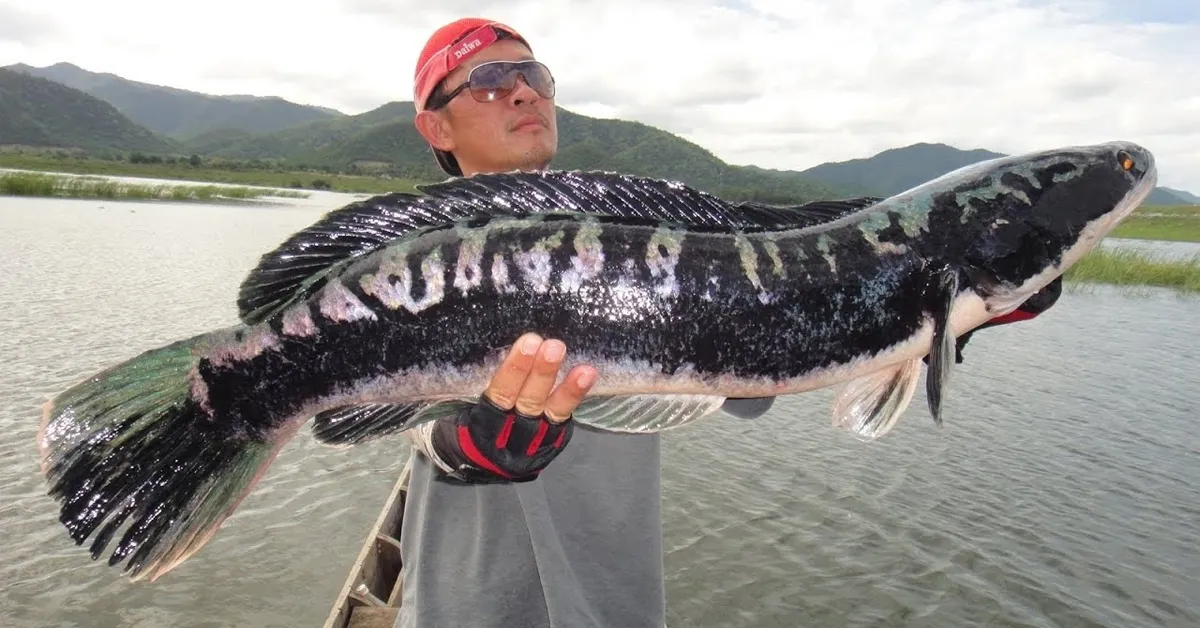
The giant snakehead lives in lakes, rivers, and other fresh bodies of water in Asia and can grow up to six feet in length. They are something to be feared because of their razor-sharp teeth and will often bite more fish than they can chew.
They don't just eat fish; these guys consume frogs and birds too. They've been reported of severely harming fishermen and swimmers who got too close. It may seem unusual, but some people like to barbecue them because they're supposed to taste like chicken.
Why the Giant Squid Stays So Mysterious
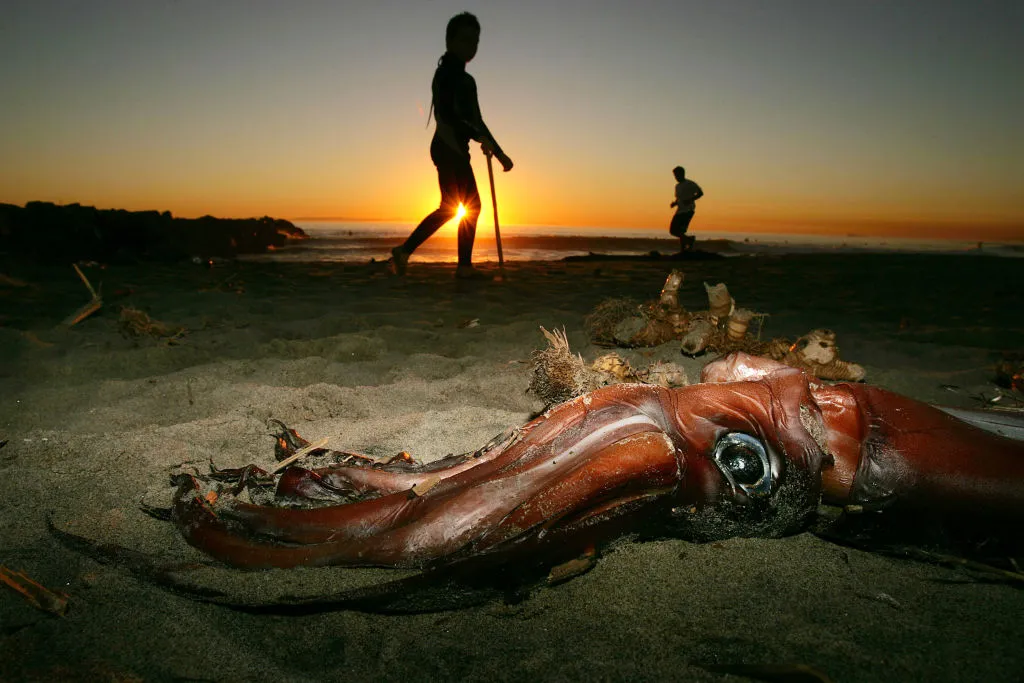
There's a pretty big reason why this scary sea creature is called the giant squid. At one point scientists found one that was almost 59 feet long and weighed nearly a ton. They are almost impossible to find in the ocean and most everything that's been researched about them has been done with their washed-up carcasses.
One of their most noticeable physical traits is their enormous eyes that sometimes measure 10 inches in diameter, making them the biggest eyes in the animal kingdom. They also have extremely strong jaws that are shaped like a beak.
The Small, But Mighty Black Swallower
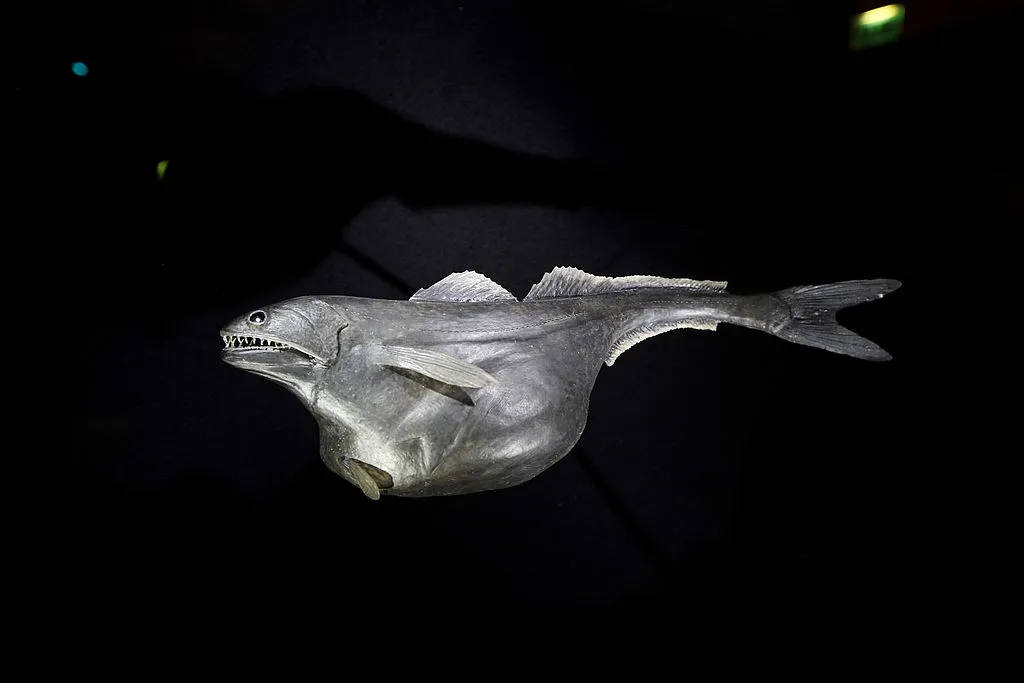
The Black Swallower may not look like the biggest fish in the ocean, but it's known to swallow other fish that are over ten times its size in one bite. They are most commonly found in North America and live at a depth of 10,000 feet below sea level.
Black Swallowers can gulp down fish much larger than themselves because of their powerfully sharp teeth and strong jaw. They can easily end their own lives by consuming too much and receiving toxic gas from their food.
A Spotlight on Anglerfish
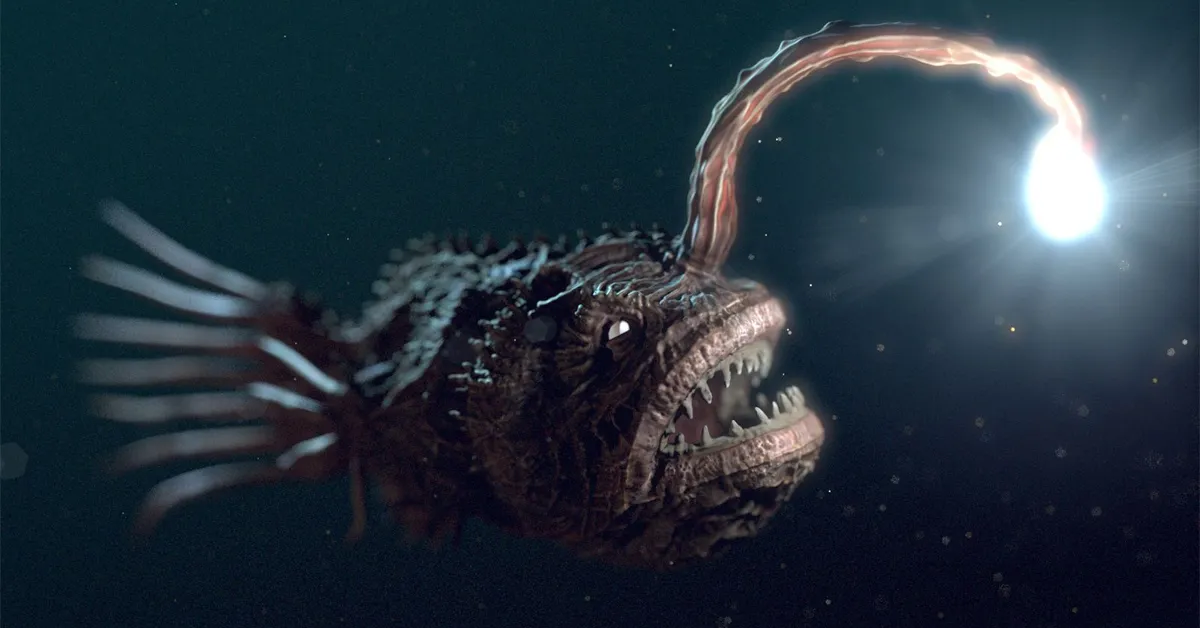
The anglerfish is not the friendliest of fish. There are over 200 species that live in the depths of the Atlantic and Antarctic Oceans. The females have one of the special distinctive features with a piece of dorsal spine that protrudes over their mouths like a fishing pole.
The part that makes the dorsal spine glow is the luminous flesh mixed with bacteria, which helps them spot prey up to twice their size. They sometimes use the light to try and lure a potential mate.
Sarcastic Fringeheads Are Total Big Mouths
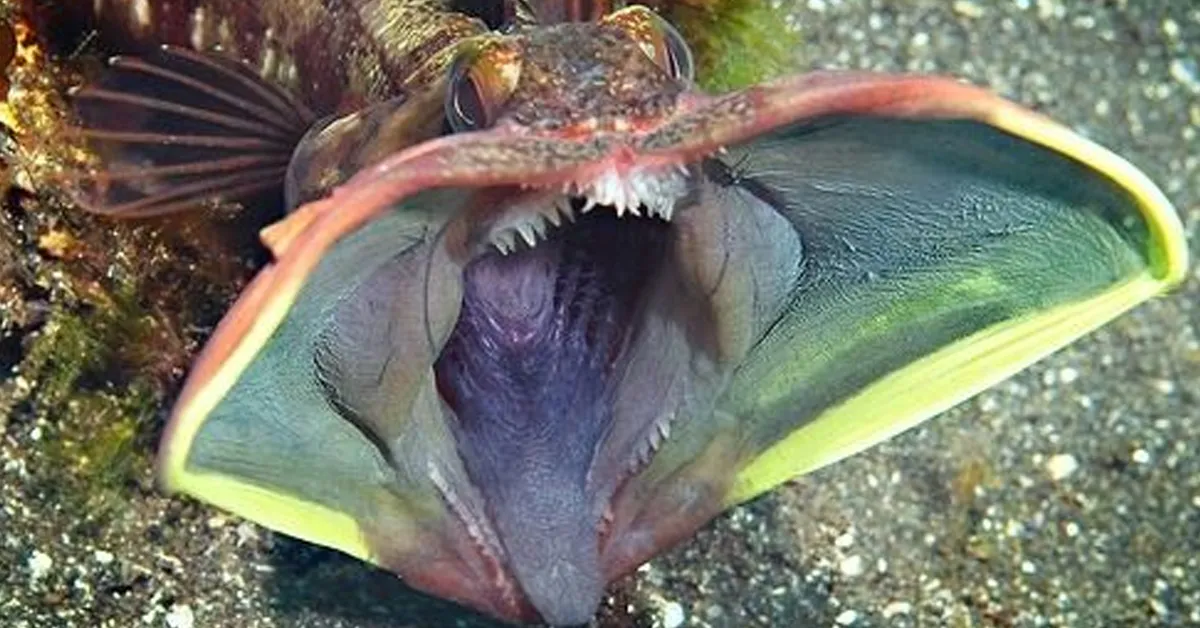
This is a photo of what the Sarcastic Fringehead fish looks like when it feels threatened. It's probably best not to try and provoke it. They are mostly found off the coast of California and live in burrows that were created by other animals or even manmade objects like soda bottles.
When a couple of Sarcastic Fringeheads get into a fight they engage in something called "mouth wrestling," where they compete for turf. It's advised for humans not to poke them because they'll likely get their fingers bitten off.
Barreleyes Can Glow in the Dark
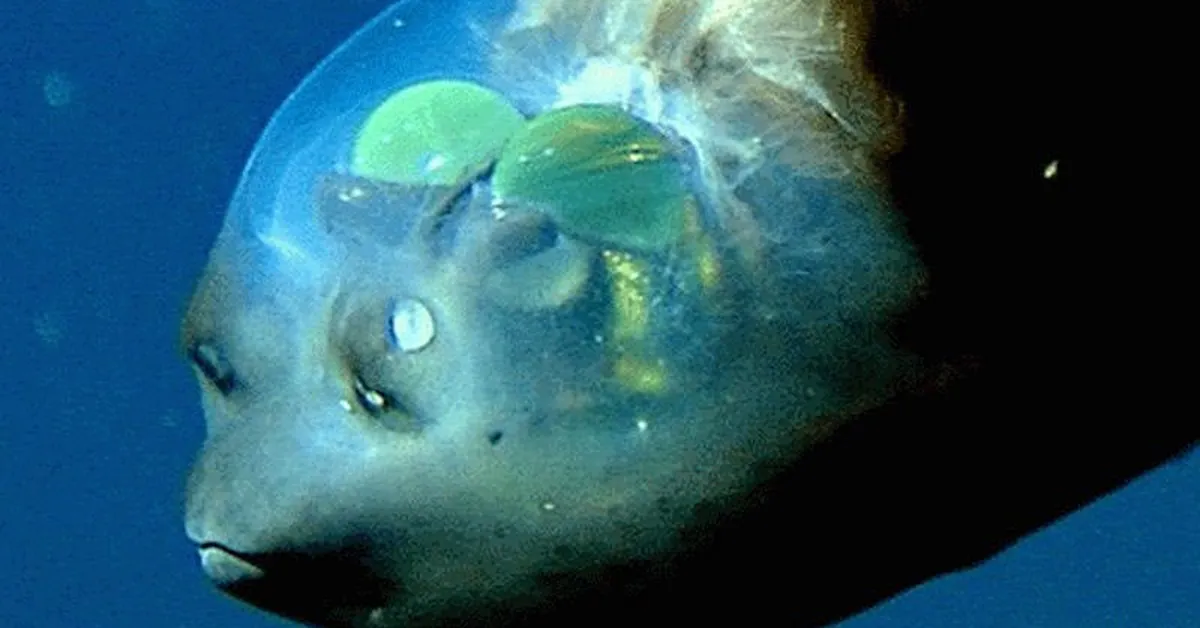
There's no other living organism that looks like the Barreleye fish. It's known for its transparent head and tubular eyes that are extremely sensitive to light. Their eyes will look upward when they are searching for food and they'll move forward when they're feeding.
Its glowing head allows this fish to adapt to the pitch-black bottom of the ocean. Surprisingly, the two bumps above their mouth aren't their eyes, rather they are their olfactory organs called nares. Their eyes are in between their nares and the two green bumps on top of their head.
Stare into the Eyes of the Ghost Shark
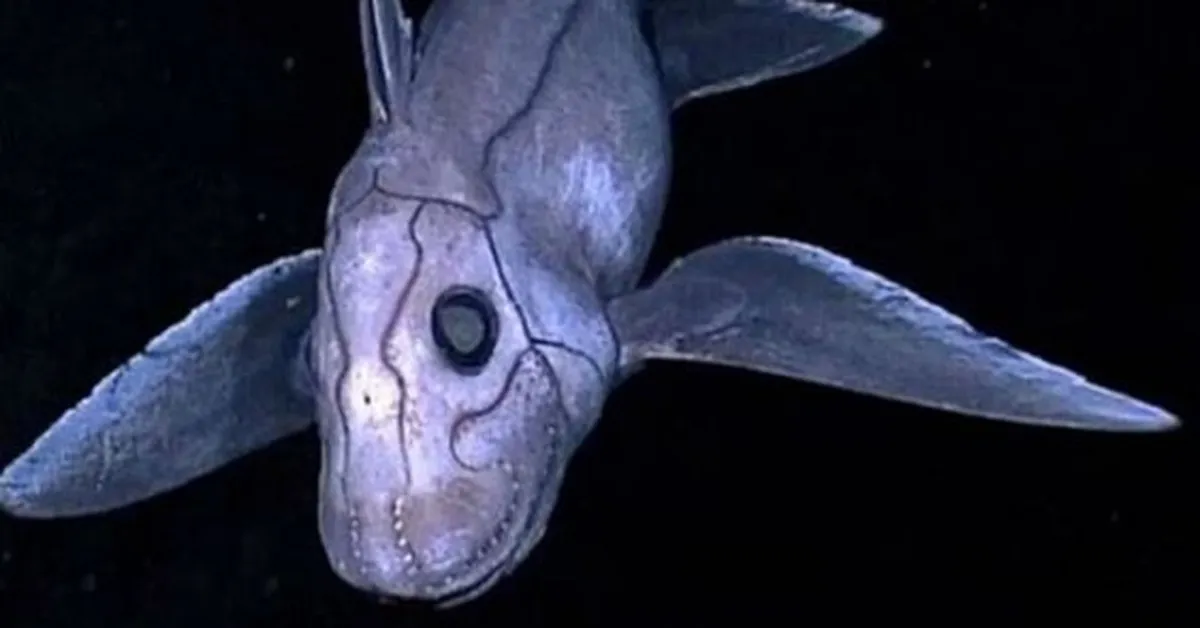
The ghost shark almost has the appearance of a voodoo doll and is probably one of the most unapproachable creatures in the ocean. Similar to other kinds of sharks, the ghost sharks have barely changed over millions of years. Their main diet consists of worms, crabs, mollusks, and other bottom feeders.
It's unlikely that people will spot them out in the open because they live at a depth of almost 10,000 feet below sea level, but some have been seen off the coast of California and Hawaii. The most dangerous thing about the ghost shark is the large jaw that helps it crush shells on the seafloor.
Pucker Up for the Red-Lipped Batfish
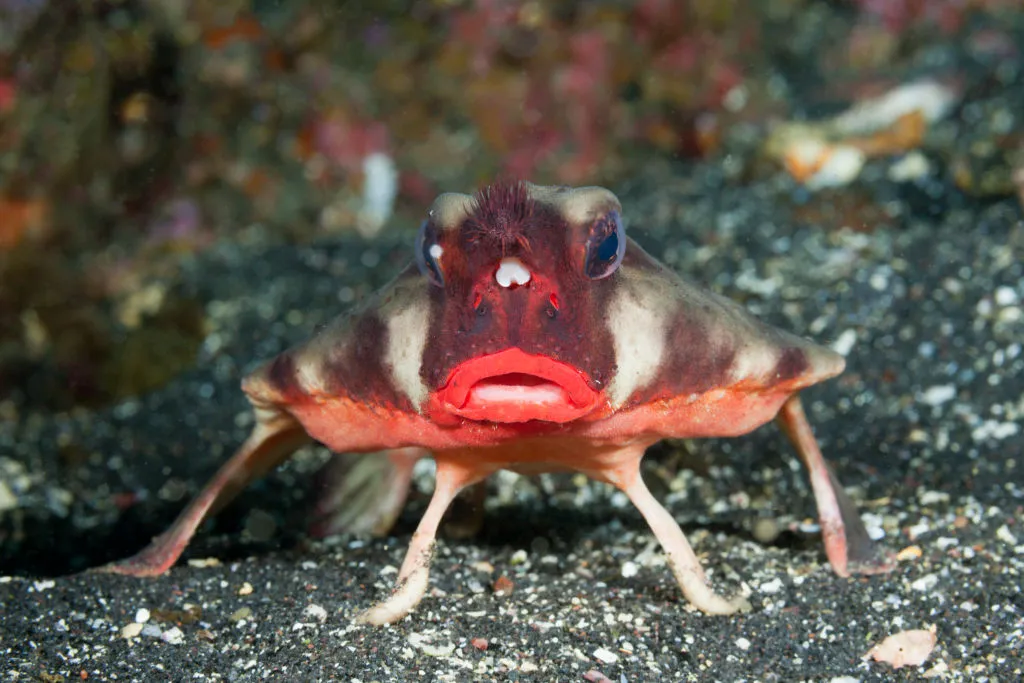
The red-lipped batfish is famous for its bright and pouty red lips, and no it's not lipstick. Something else unique to this fish is its elongated fins that help it walk across the ocean floor. They can only be found in the Pacific Ocean near Galapagos.
The climate steadily increasing in temperature each year poses a threat to them because it alters their natural habitat and decreases their natural food source. Similar to the anglerfish, the red-lipped batfish also has a horn sticking out in between its eyes to attract prey.
Chomp into the Life of an Atlantic Wolffish
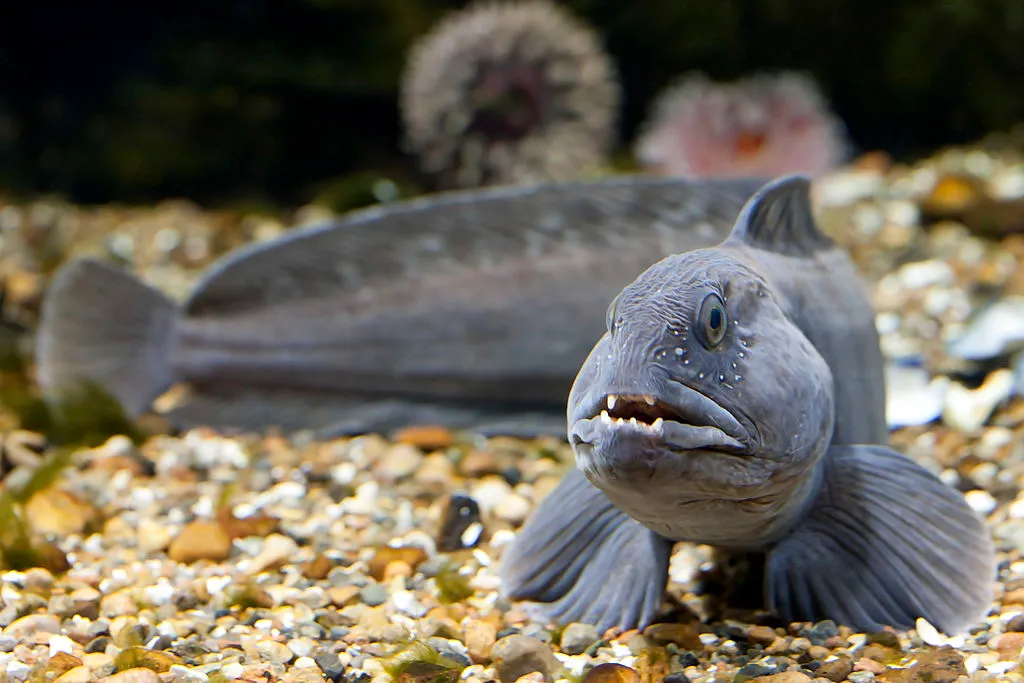
Even fish have teeth and the Atlantic wolffish's teeth are some of the sharpest of them all. It may be hard to tell from the photo, but these fish can grow up to five feet long and hang out in the chillier water of the North Atlantic and Arctic Oceans.
Their large canine teeth are used to bite into hard-bodied or spiny invertebrates such as sea urchins, crabs, and sea snails. Some fishermen seek out this fish because it's considered a rare delicacy.
Watch Your Fingers with the Viperfish
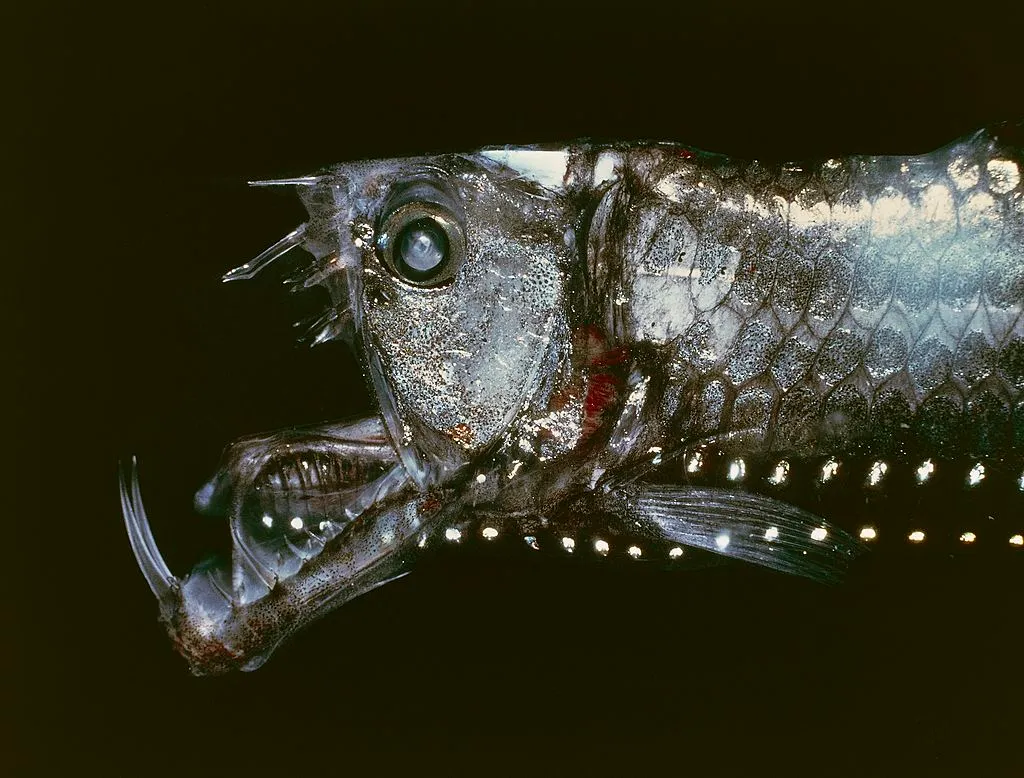
Viperfish are some of the most vicious predators in the ocean and are easily recognizable by their wide mouth and sharp teeth. When they see a possible victim for food they will swim toward it at high speed and impale it with their fangs. Even though it seems to be one of the most feared fishes, it only grows up to one foot long.
They also have an antenna-like light that sticks out of their spine used to attract prey. Sometimes they'll stay perfectly still in the water and just use the light to lure smaller fish in.
The Japanese Spider Crab Has Some Impressive Legs

In order to show people how large the Japanese spider crab is they had someone dangle it over skyscrapers made from Legos. Their leg span alone can reach over 13 feet and they can weigh around 40 pounds. While their legs may be bigger than average, they don't last long because they're very fragile.
Not only is it one of the most unusual sea creatures, but it also is one of the longest living animals on earth with a life span of 100 years. One of the ways they can live for so long is because they hide from predators by camouflaging their exoskeletons with kelp, sea sponges, and smaller animals.
Swallow These Facts About the Gulper Eel
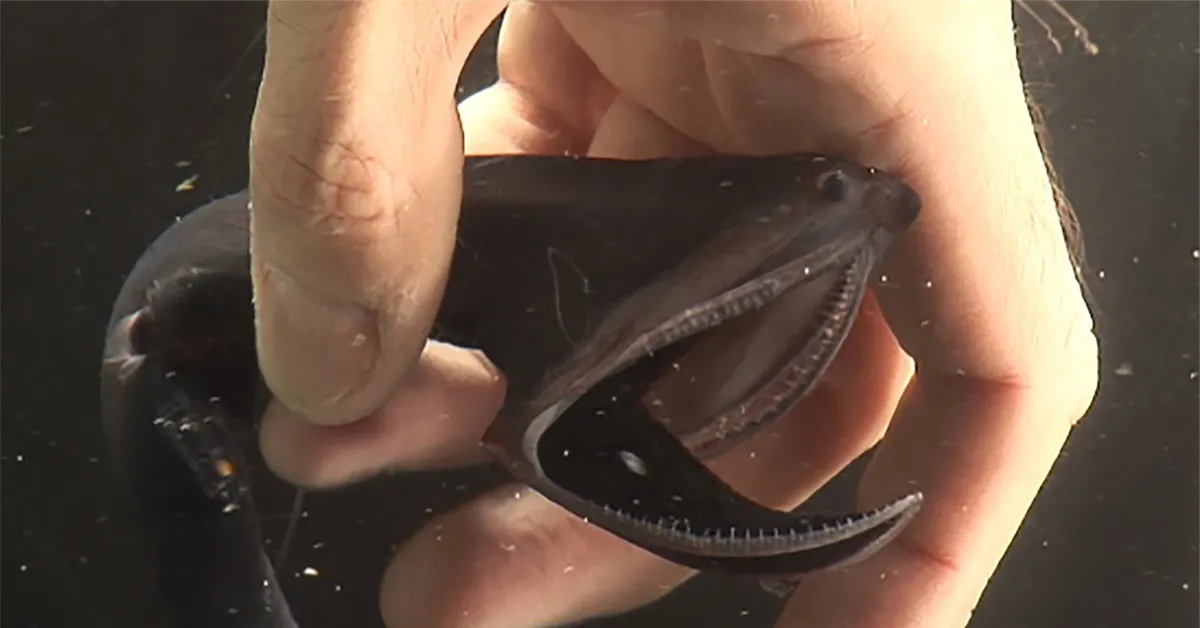
When looking at a gulper eel people are immediately drawn to its gaping mouth. The bottom half serves as a pouch where they can hold onto their food, similar to a pelican. Their eyes are smaller than most sea animals because they are used to detect light, instead of to view images.
Another key signature trait of the gulper eel is its long, thin tail that's used for movement. The end of it contains photophore, which produces light. This process of bioluminescence causes the tail to glow pink and give off red flashes.
Sea Pigs Aren't Pigs At All
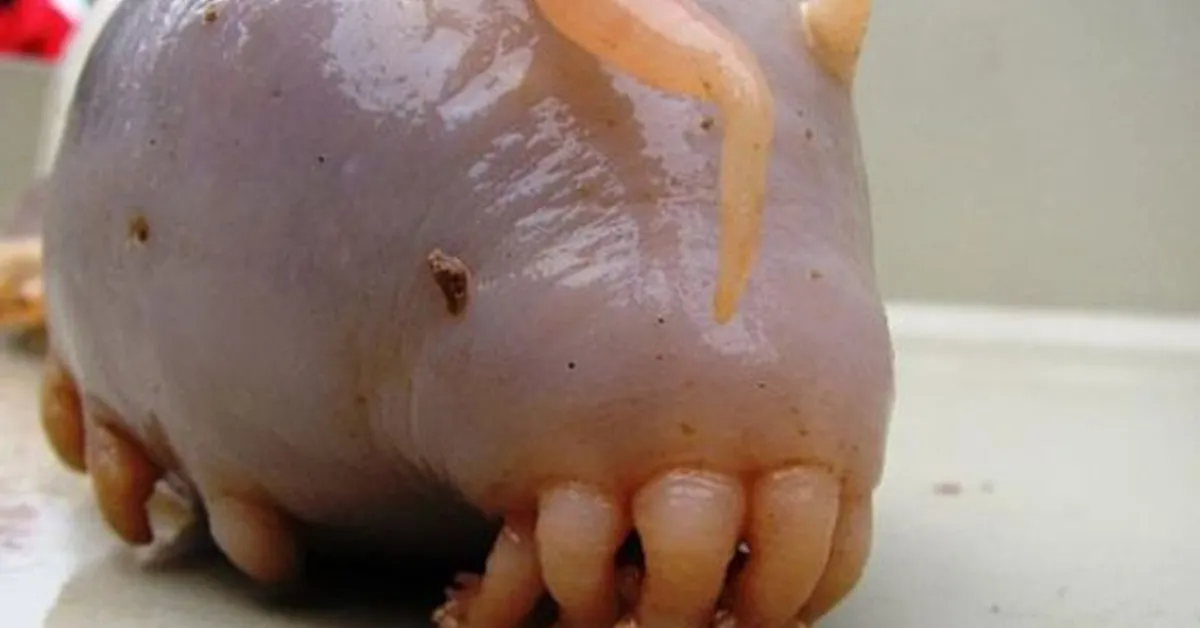
Contrary to their name, sea pigs aren't actually pigs, but are a type of sea cucumber. The reason they're called sea pigs is because of their puffy legs and plump, oval-shaped pinkish bodies. It would also make some think that they are the size of actual pigs, but they can easily fit into the palm of a hand at four to six inches long.
Sea pigs need to stay in the coldest ocean floors and get around by walking with their tube-like legs. They usually like to gather in large groups and will all face the same direction, depending on the currents and best feeding sites.
Finding the Light with the Hatchetfish
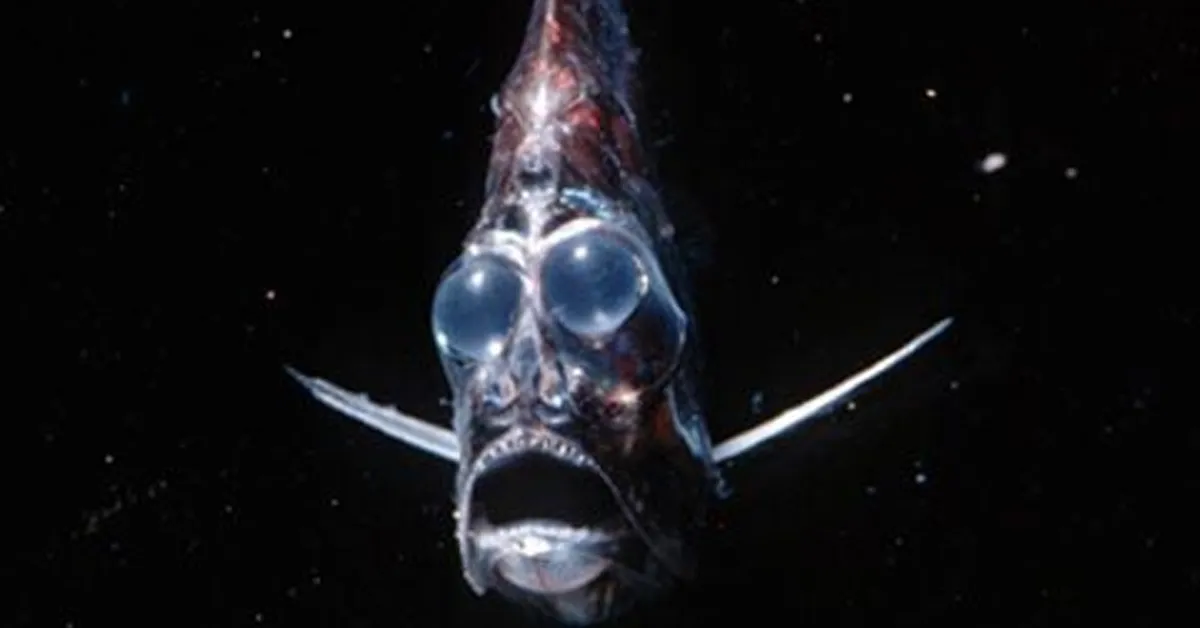
The hatchetfish gets its name from the thin, hatchet-like shape of their bodies. Since they live toward the bottom of the ocean their eyes have become very sensitive to light and are good at finding shadows against a dark background.
Similar to the gulper eel these fish can create their own light through bioluminescence, but the organs that produce it point downward. This is called counter-illumination, which can make them nearly invisible to potential prey and also help them find a mate.
Wiggle Along with the Squidworm
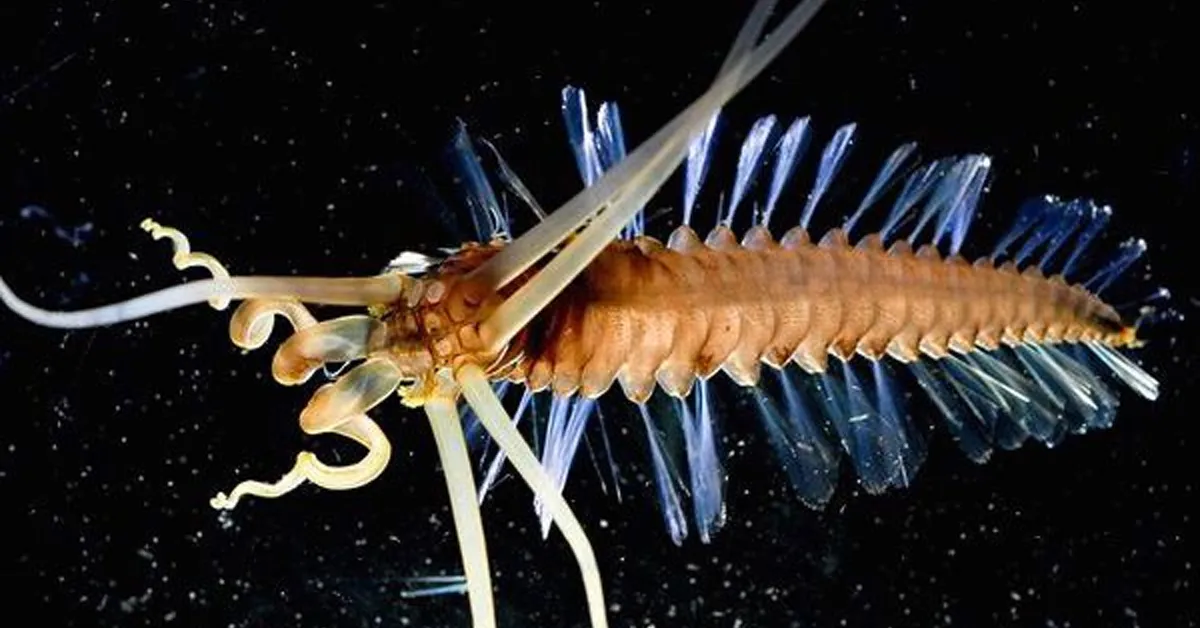
Scientists went to great lengths to find the squidworm, which isn't actually a type of squid. It's a worm named for the 10 tentacle-shaped antennas that burst out of its head. These antennas are longer than the body and are used to collect particles from the water for feeding.
Around the outer edge of their body, there are feathery brush-like structures called 'nuchal organs' that are used to smell the chemicals in the water. While the squidworm was only discovered less than a decade ago, many researchers believe they are fairly common along the seafloor.
Triggerfish Want to Flash Their Pearly Whites
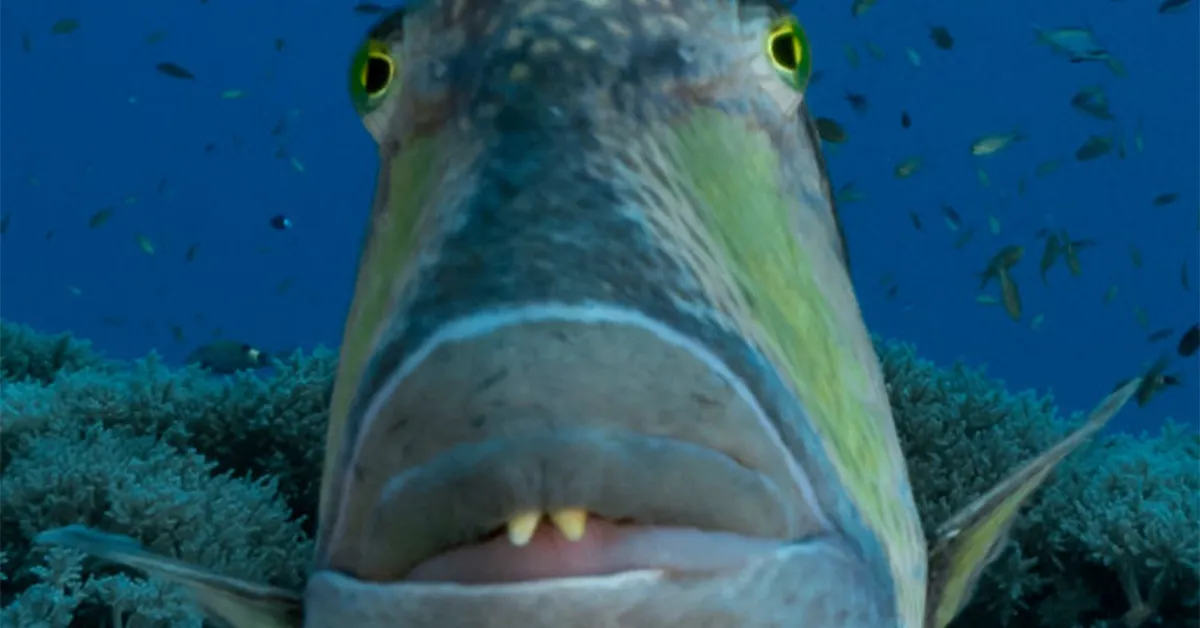
When spotting a triggerfish swimming at a side angle it probably looks like an average fish, but caught head-on onlookers are in for quite a twist. Each of them have human-like teeth that make them seem like a fish-human hybrid.
Their large teeth and jaws are used to eat bottom dwellers such as sea urchins and smaller fish. They have also been known for their nasty attitude and will charge and bite human divers. Triggerfish are highly sought after for aquarium trade and this is causing their species to start to disappear from the wild.









